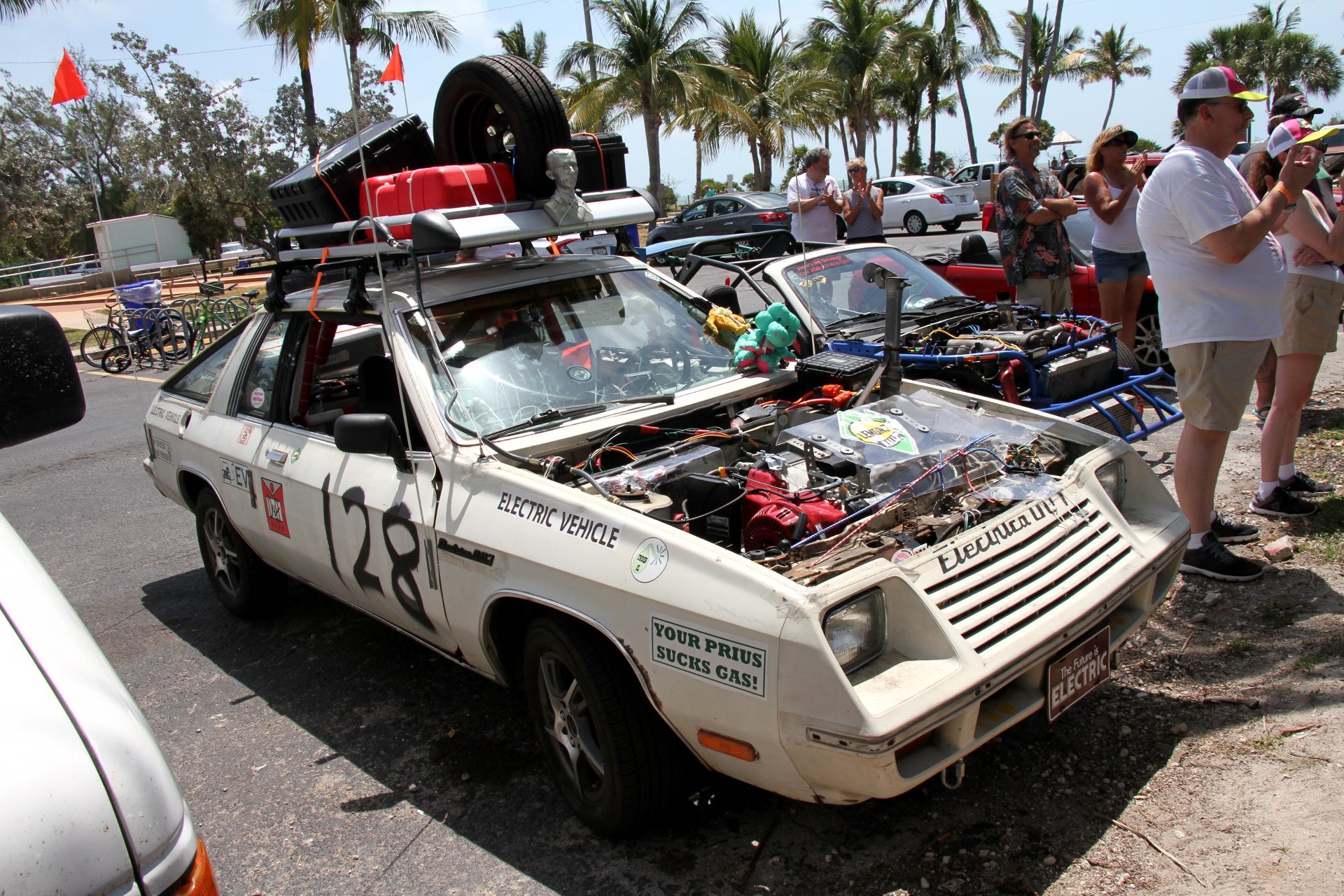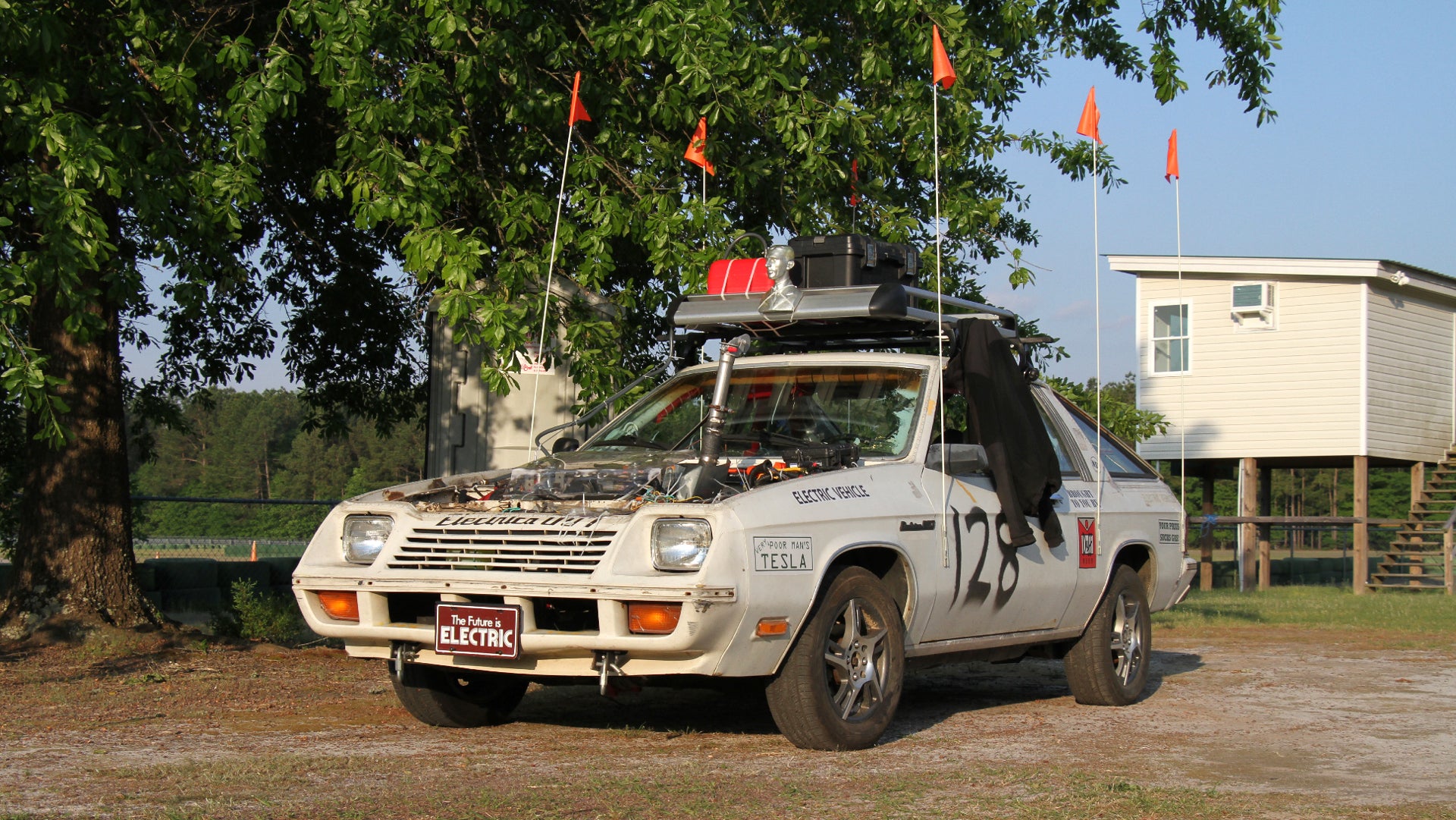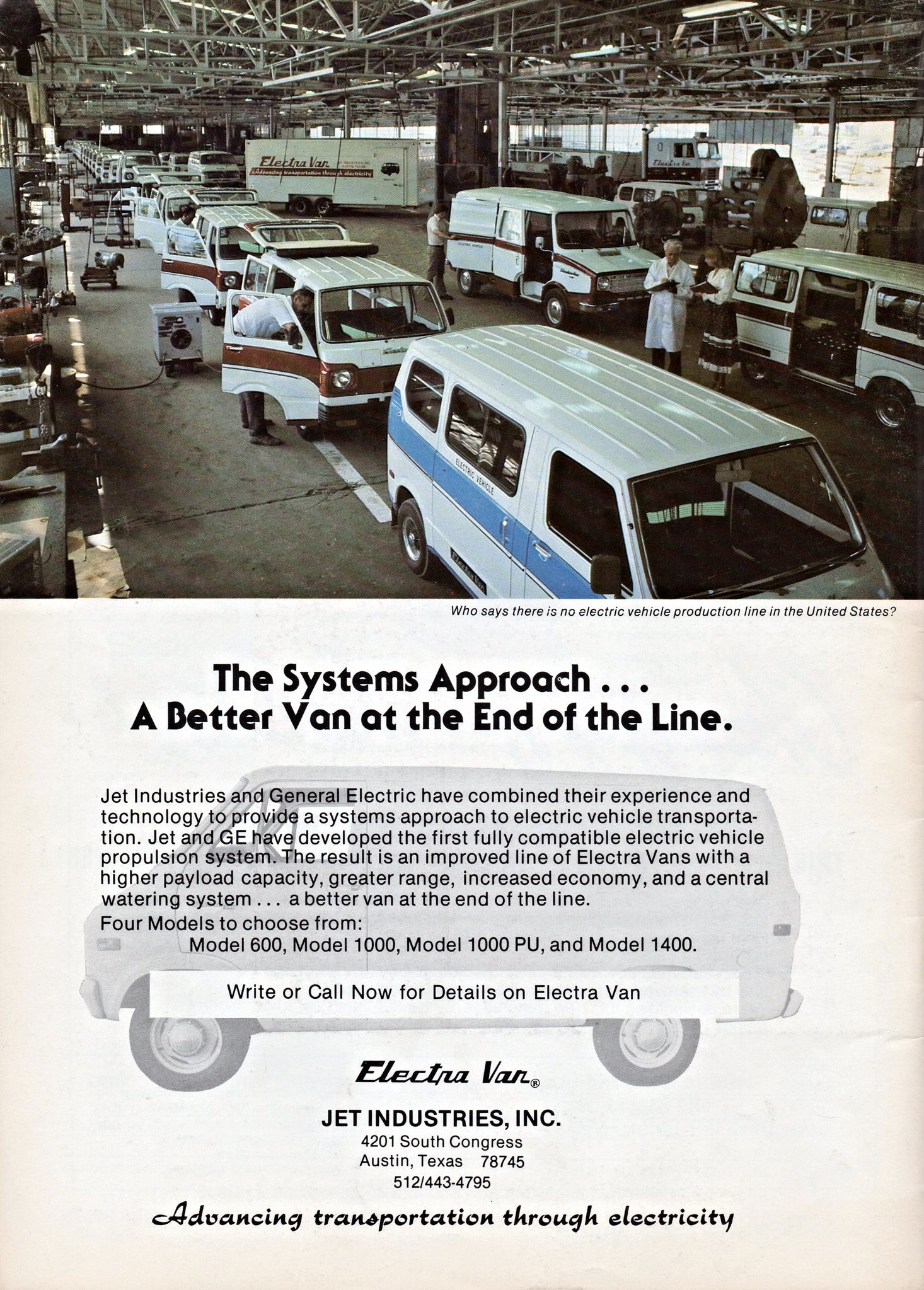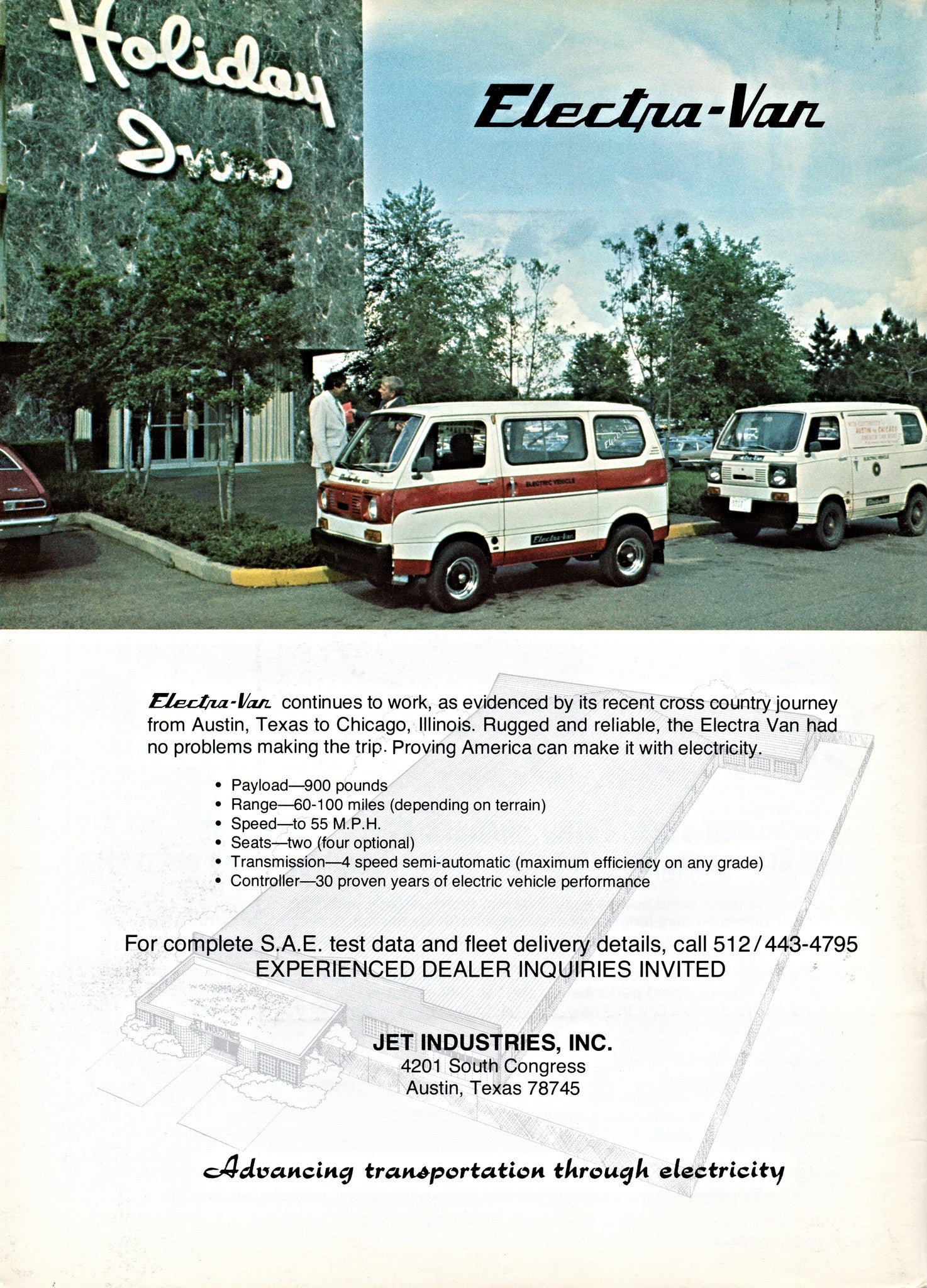If there's one sign of how far electric vehicles have come over the past few decade, it's Duff Beer Racing's resurrection of a classic 1980s Jet Electrica 007 EV. It's a Dodge Omni, except Jet provided its state-of-the-oil-crisis electric motors and batteries to power it.
Early electric vehicles were mostly meant to be city cars with relatively short ranges and low speeds. The point in the seventies and eighties was more to be efficient transportation in the aftermath of an unstable oil market, not to dominate the drag strip or wow people with range. So, of course the Duff Beer Racing crew made their early eighties EV into a road-legal endurance race car—and they're not afraid to take long trips with it, even if those turn into a scenic tour of public charging stations.
Tesla won't be the first electric vehicle company to set up shop in Austin. Before them, there was Jet Industries, which decided to branch out from its usual electric work vans into street cars. According the 24 Hours of Lemons, Jet based its roadgoing EVs off of complete Ford Escorts and Dodge Omni 024s/Plymouth Horizon TC3s (hooray badge engineering!) purchased sans engines. In went stiffer rear suspensions, a series of batteries, an EV1 controller and a 23-horsepower electric forklift motor, but it kept the transmission, which in the Omni-based Electricas was a Volkswagen four-speed transaxle. The top speed? Roughly 55 mph.
Naturally, Duff Beer's weird mishmash of Austin-hippie electro-dreams and general dodginess found its home in the 24 Hours of Lemons, a series that encourages people to enter cars that never belonged on a race track into amateur endurance races.
The team has tried numerous upgrades to get their Jet Electrica 007 to go just a bit faster, charge more efficiently and run more reliably. For its first race at Carolina Motorsports Park, the golf cart batteries that came stock in the Electrica were swapped for modern deep-cycle marine batteries. The team had to pause that race when a mouse nest built inside the motor caught on fire and started smoking. Turns out, varmints love to build nests in old EVs, too!
They also had to pull in every three or four laps to swap in recharged batteries, and learned along the way that fire ants are extremely attracted to electrical currents—which the small army of chargers (which were originally meant to use with a crop-dusting drone, but had been modified) generated a lot of.
For what it's worth, this was still safer than the charging setup for Lemons' first electric car, a forklift-motor-swapped Datsun Roadster, which ran at MSR-Houston. The batteries were charging out in the open, and because it's a Gulf coast race, it rained. The race organizers weren't too pleased.
After getting the full deep-south fire ant experience, Duff Beer moved to an 88-hp brushless motor paired to a Curtis controller and Chevrolet Volt lithium-ion batteries. They're still hot-swapping these batteries in the pits for races, too, as each battery set is on a custom frame that drops in and out of the hatch of the car.
But wait! Endurance racing an obscure 88-hp EV wasn't enough. They started taking it on the 24 Hours of Lemons' road-based offshoot, the Lemons Rally. Think of the Lemons Rally like a big interstate scavenger hunt. There are start and end points for each night and various roadside attractions and oddities to find along the way.
I met the team when they did the Florida Man Poker Run Lemons Rally in 2019, where they tried putting a generator in the front of the car to make it a sort of homebrew hybrid. The generator was loud, noisy and right in the driver and passenger's face. Worse yet, the 12 kW charging controller had to sit inside as it couldn't get wet, and the fans that kept it cool essentially acted as a heater for the occupants of the car. Mind you, the rally started in late April and left from Carolina Motorsports Park.
It also just didn't work—the generator is an internal combustion engine, after all, and it needs airflow in order to work properly. There wasn't enough air flowing through the engine bay. According to Roger McDaniels of Duff Beer Racing, the team found this out after they ran the batteries completely out of power. They tried to reach a further away checkpoint on the rally, and the mileage just didn't work out. It went extra wrong when they parked at an abandoned building to charge up, as McDaniels explained on Facebook:
After a few minutes of charging, the generator shuddered violently to a halt, badly overheated. We had enough energy to make it a couple of miles to the next wide spot in the highway, where we found a Dollar General store and bought a couple of box fans which we propped around the generator with duct tape and bungee cords. This would get the generator to go a bit longer before seizing up, but still not long enough to get us out of the boonies. Several hours later, after a few heat cycles of the generator, we had enough energy to make it to Wilmington. This wasn't going to work.
Bonus: The extra heat messed up the car's regenerative braking system, which is especially needed for this heavy battery-filled car given that its brakes have no power assist. This also had to be fixed en route.
From there on out, they decided to use traditional chargers in place of the generator. McDaniels said that they got an adapter box from Tucson EV that would allow the car to use level 2 charging stations, but it came in the day before he left. He actually put it together using an 8-gauge extension cord hooked to an RV outlet in the passenger seat of the Electrica 007, but figured they wouldn't need it because of the generator. Au contraire! McDaniels continued:
In Wilmington we found a Whole Foods with a free L2 charging station and tried it out. To our surprise it worked, kind of. First it caught fire because I tried to pull too much power and toasted a couple of pre-charging resistors, but after I fixed that and reduced the charge rate, we could sit there in the parking lot (Whole Foods was closed) and watch the battery meter go up on someone else's free electrons.
After that, they relied on the Plugshare app to find more free charging stations, and limited their speed to 50 mph to stretch those charges out. They even rented an RV spot the next day to take advantage of the charger there, and stayed at hotels with charging spots from there on out. They had to focus on getting between 80 and 100 miles per charge, too, else they wouldn't make it to the rally's endpoint at the south end of Key West.
The level 2 charging adapter died on the third day of the rally, making it take even longer to charge. The Lemons Rally organizers decided that they'd get points for each charging stop instead of the actual checkpoints. According to McDaniels, Nissan dealerships had the best public charging stations, as they sold EVs and needed them to work. Hotels were the worst, where poorly maintained or improperly installed chargers seemed to be a running theme. Needless to say, they were deemed the winners of the Lemons Rally after just being able to make it to the end point on time.
(McDaniels' full run-down of the event here is worth the read, as just about everything that could go wrong short of the entire car going up in flames did.)

After that, to get to a Concours d'Lemons (another tentacle of the 24 Hours of Lemons universe that's a concours for weird, terrible or otherwise interesting cars) Duff Beer installed a second battery pack up front and towed a Harbor Freight generator behind the car. They also rigged the charger to fool Tesla's proprietary superchargers into powering the Volt batteries up a little bit faster.
The 24 Hours of Lemons is currently offering a $50,000 prize to anyone who can win an Lemons race overall with an electric vehicle. They don't think it will be the Duff Beer Racing Jet Electrica 007, but this is definitely the most-developed car in the series.
Watching a team try to sort this car puts a lot of the electric startups and the wider, weirder hobby of EV-swapping cars in perspective, though. Getting new technology to work right as everyone is continually developing EVs to run longer, go faster and be more reliable is tough. Everything from new tech to proprietary systems and parts availability can be a hurdle. After all, that's why the grand prize for winning a Lemons race with one is so huge: They're not even sure anyone can do it.

[H/T Vance Facundo for the Jet ads!]
Got a tip? Send us a note: [email protected]












